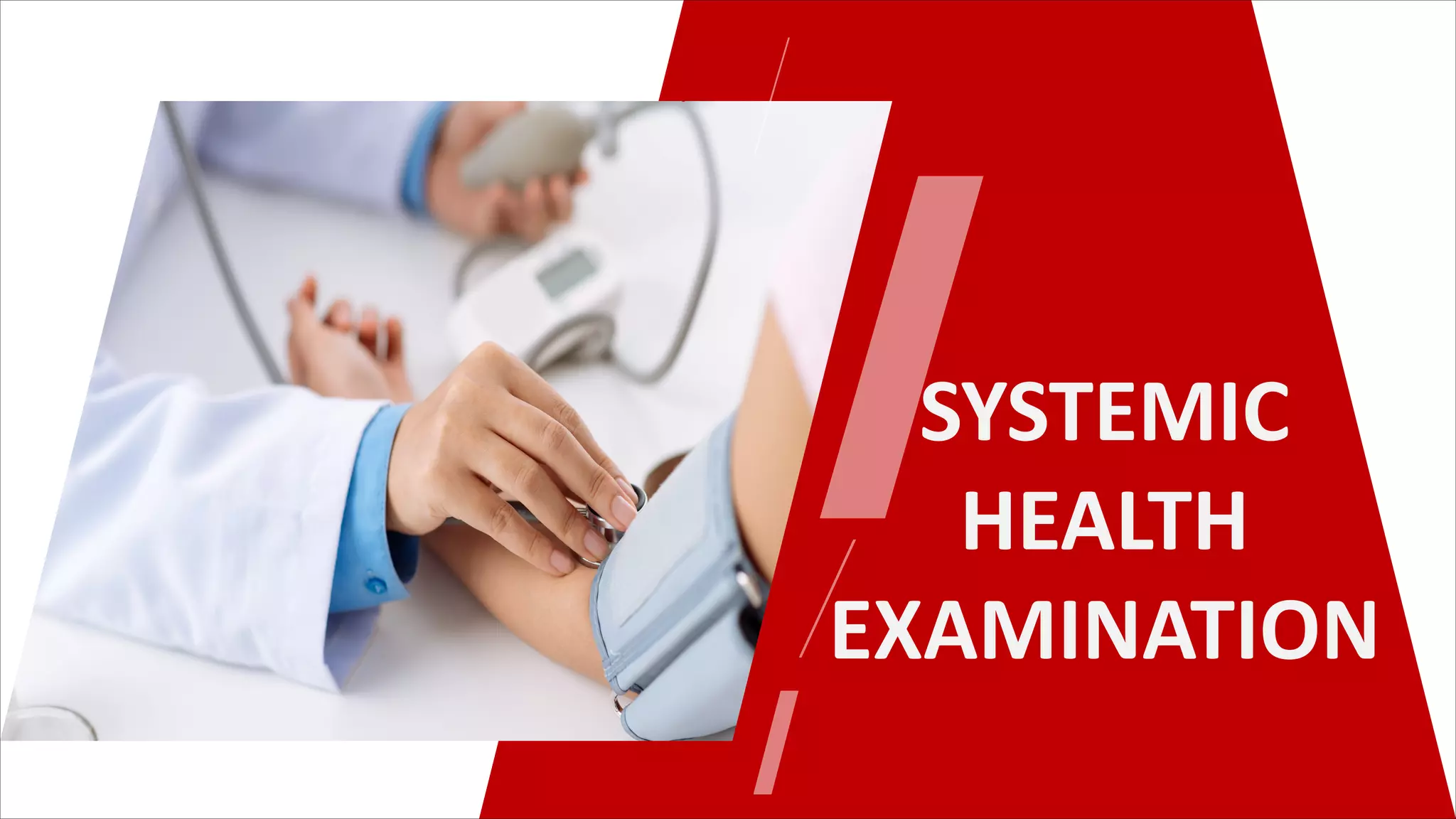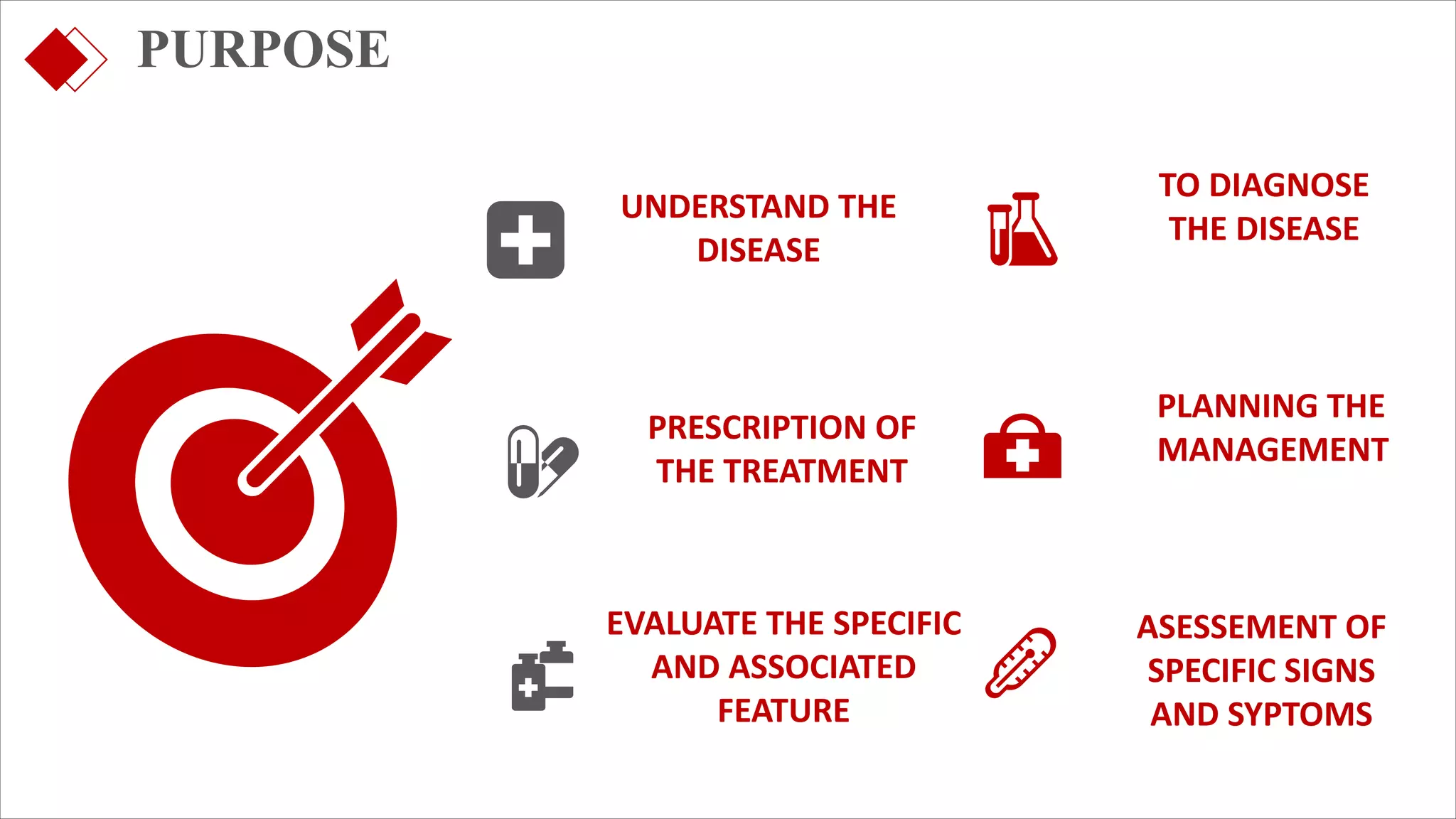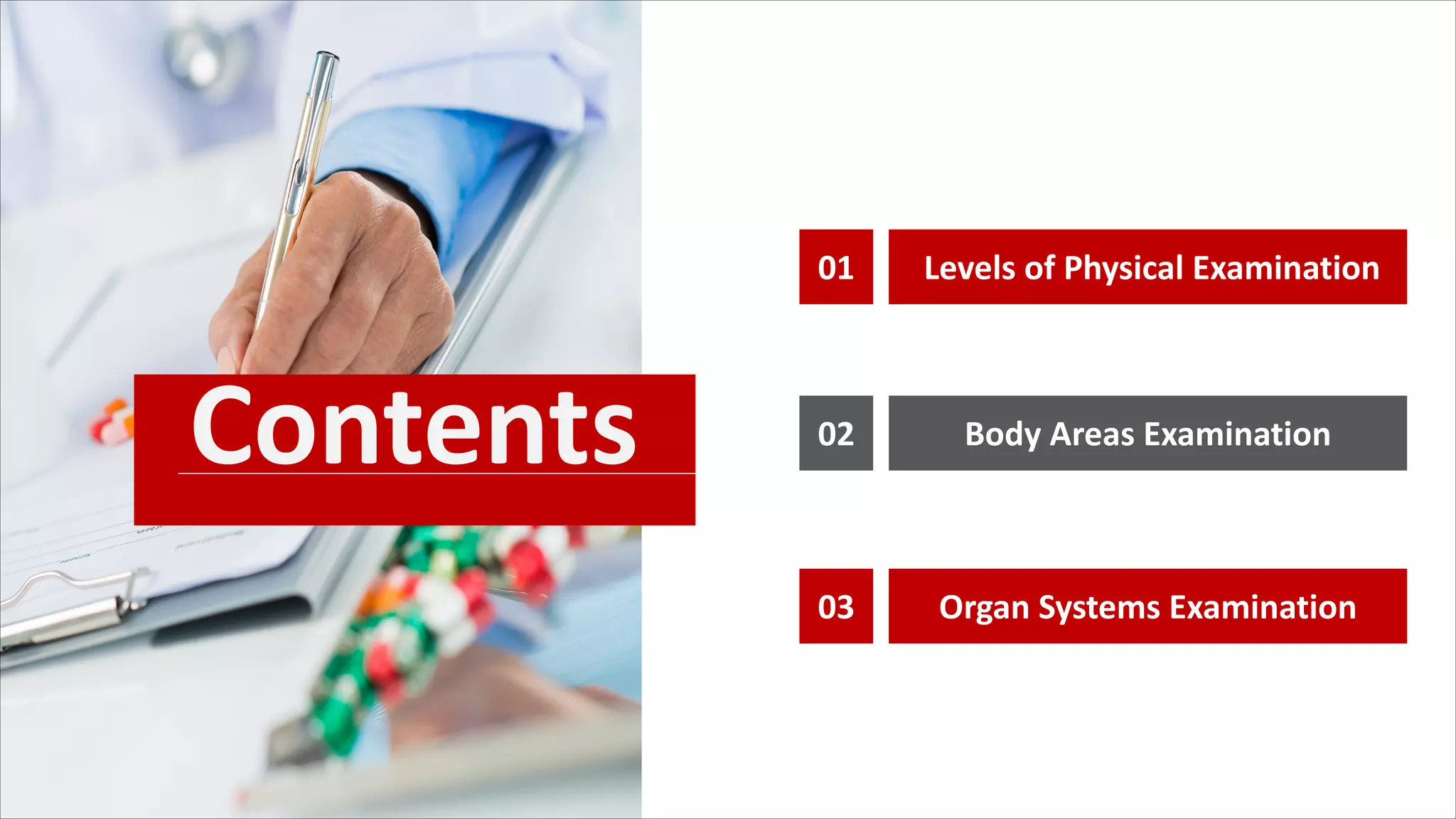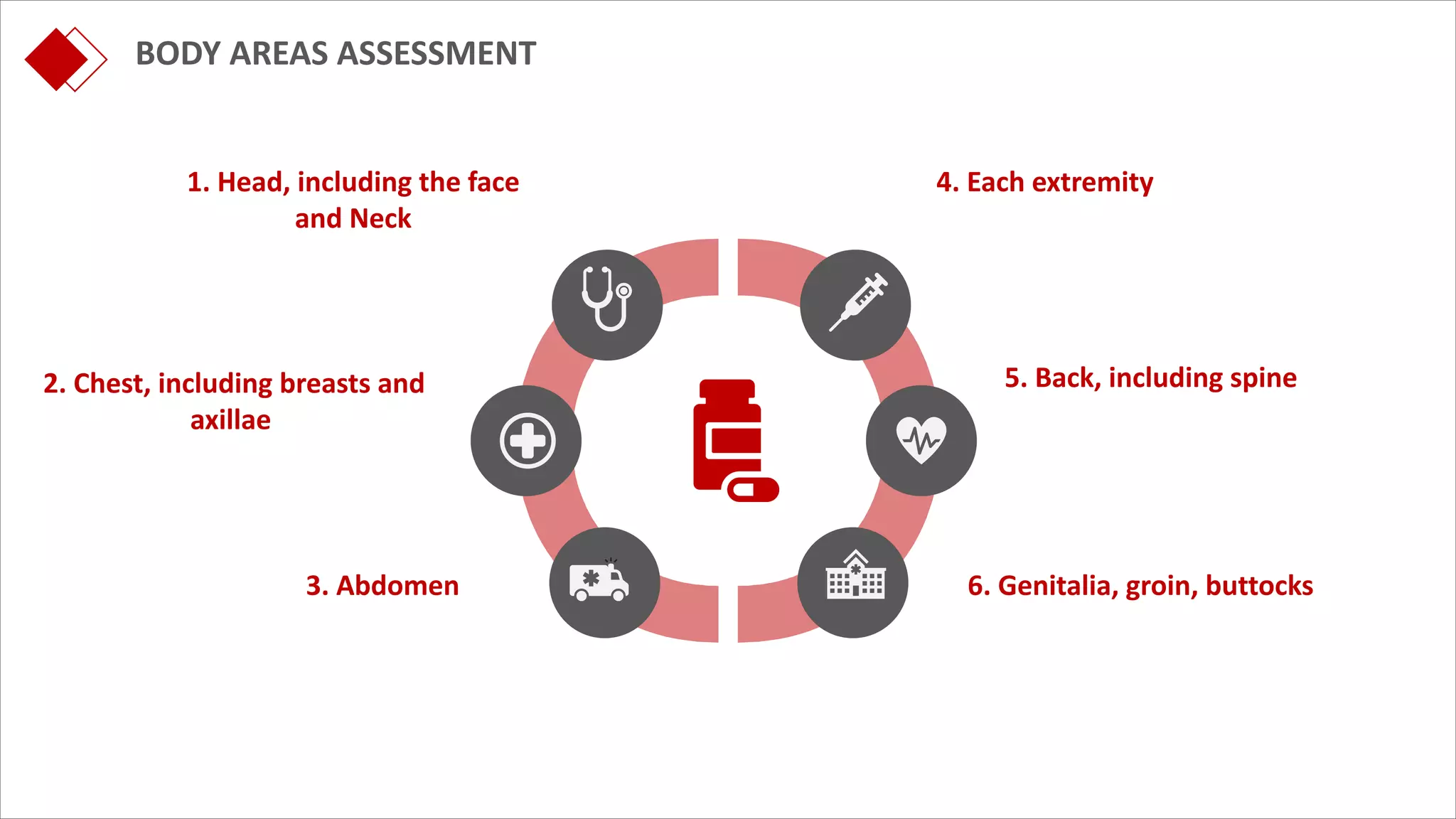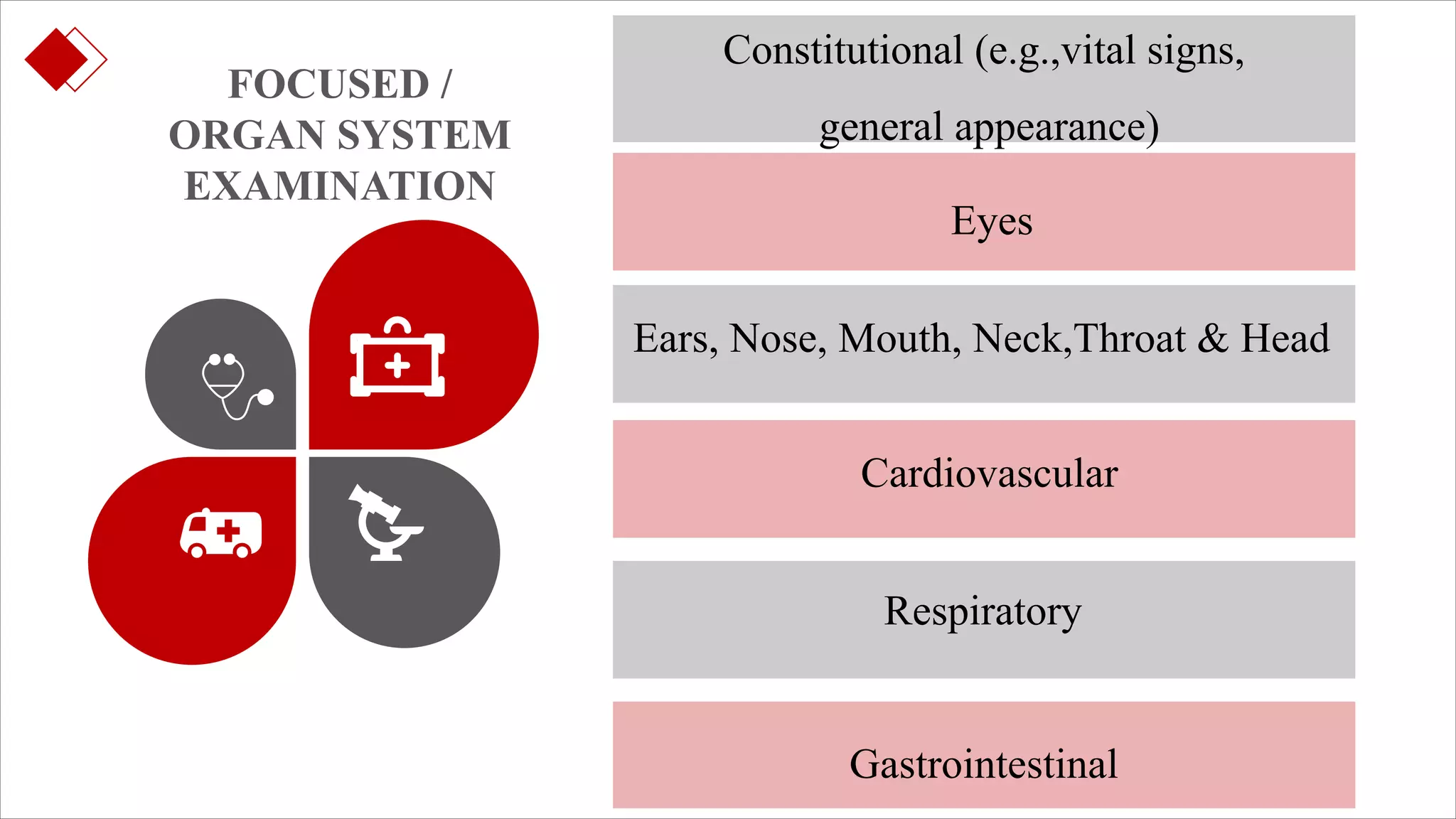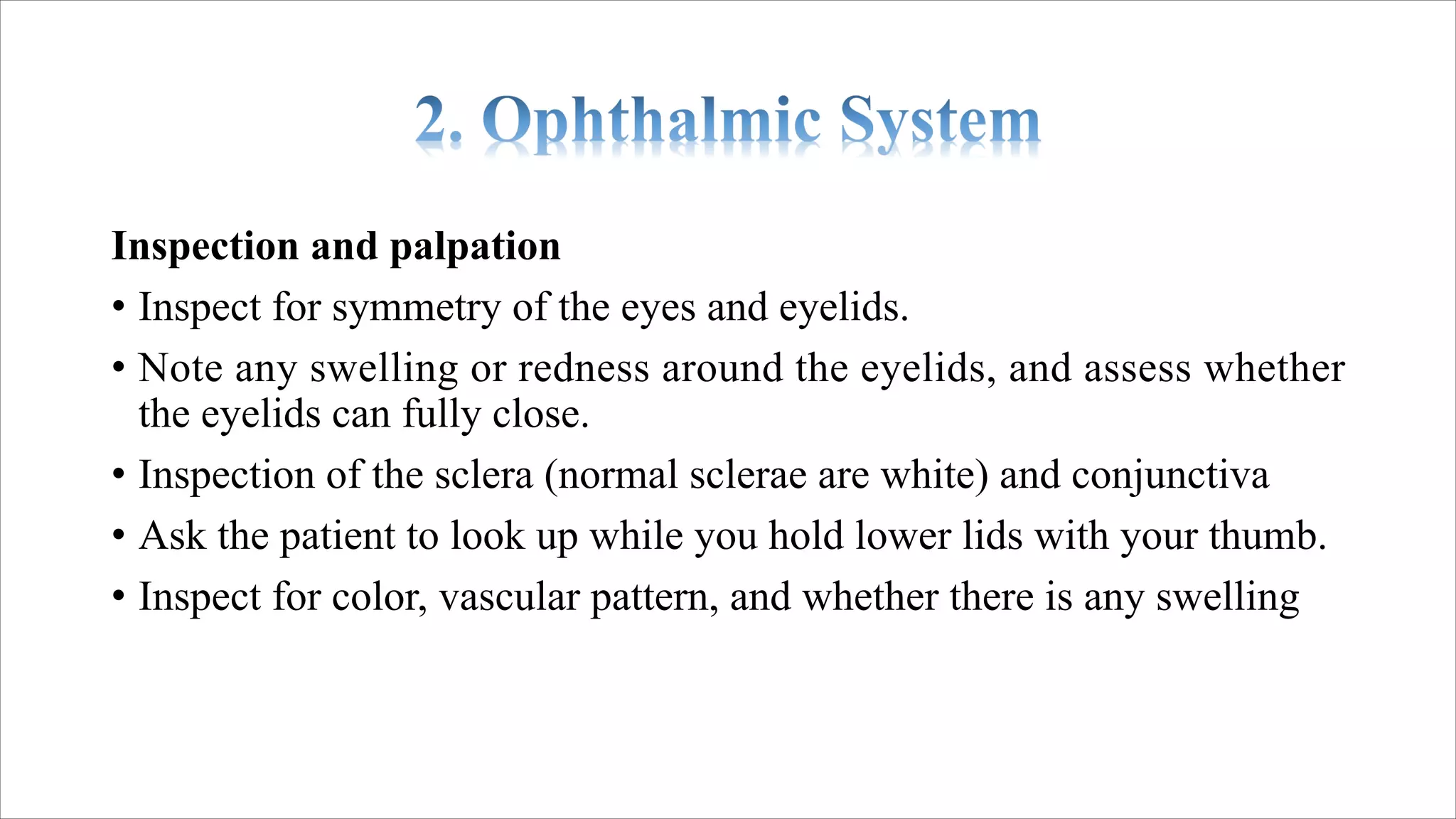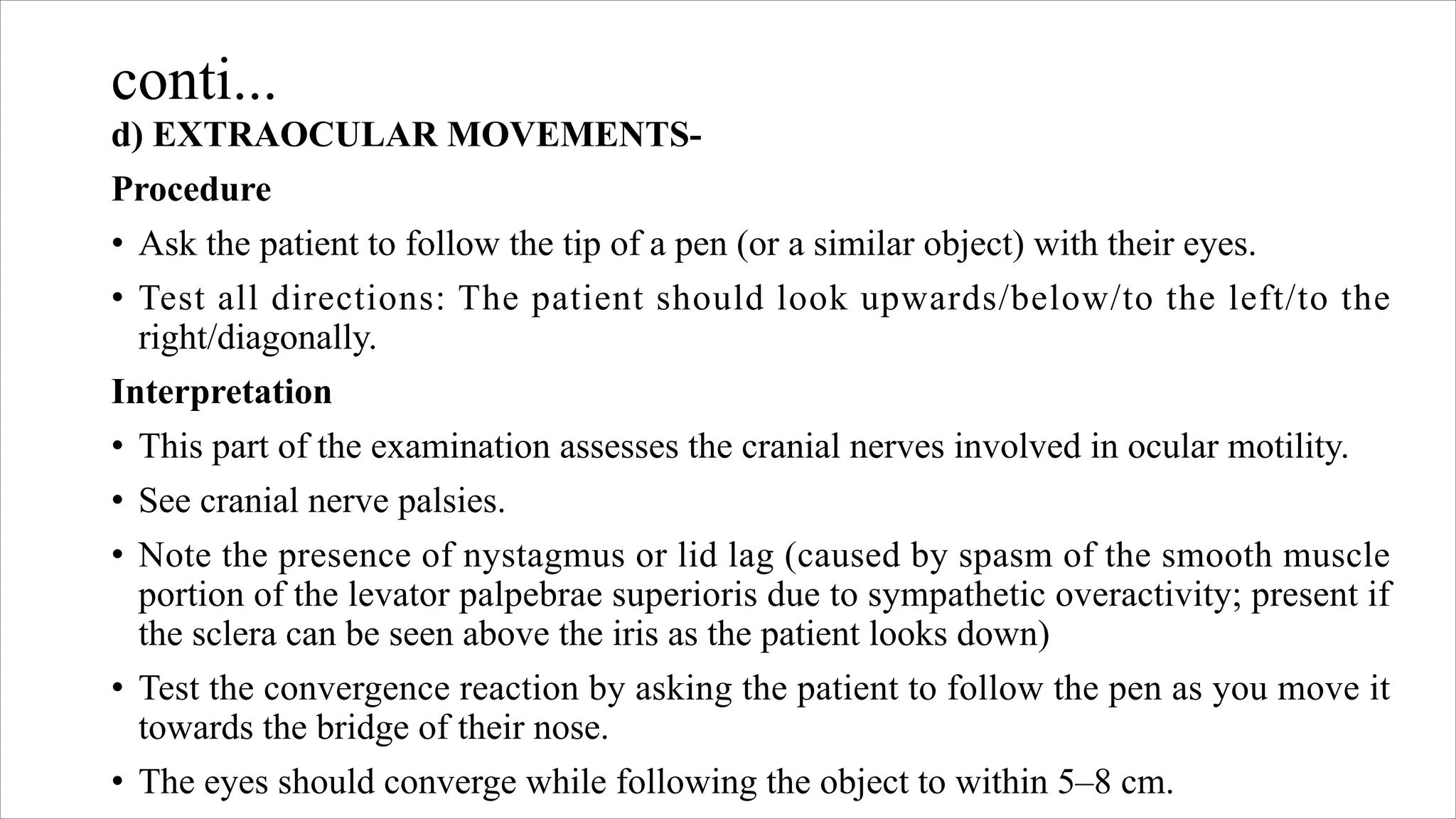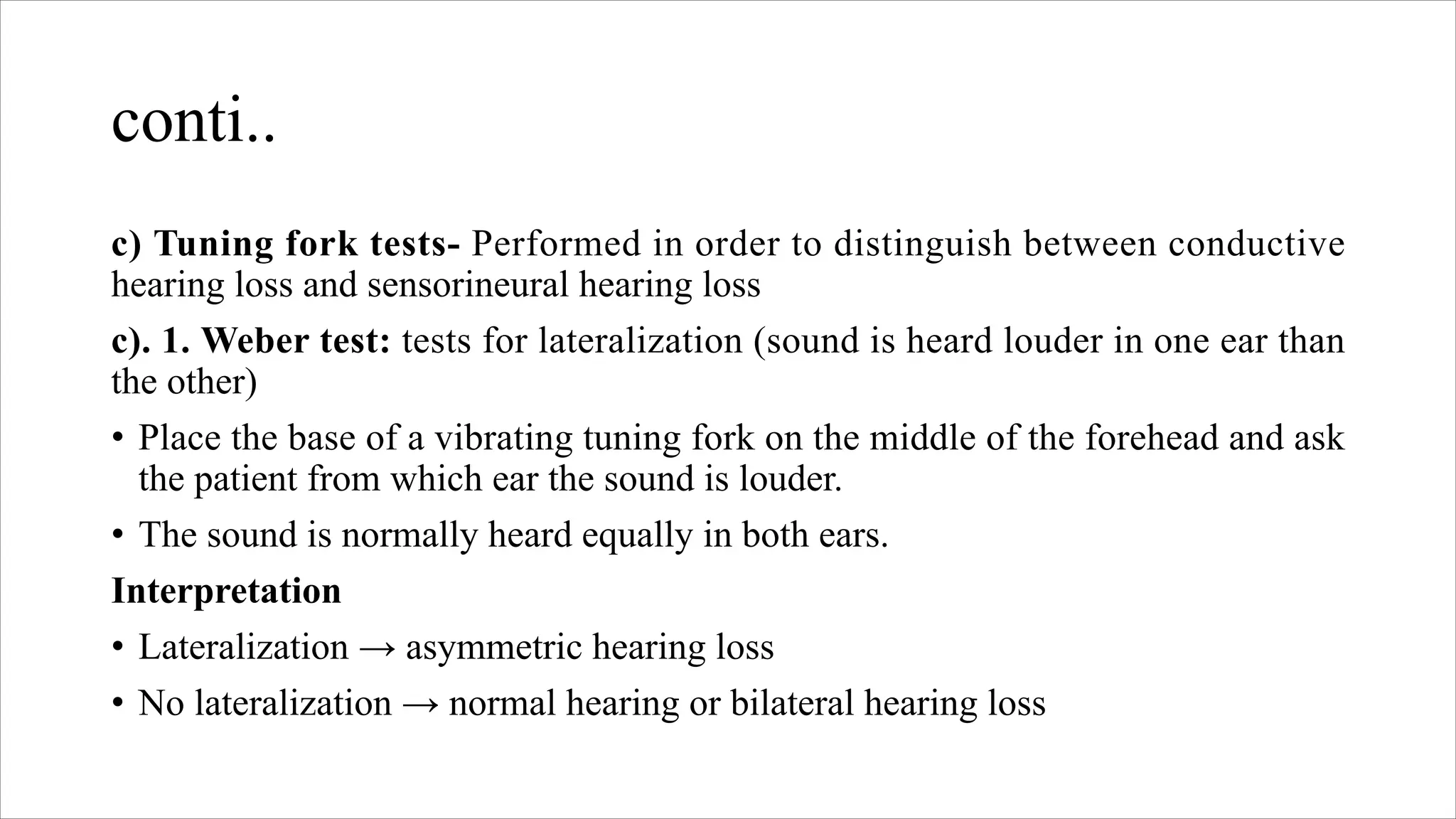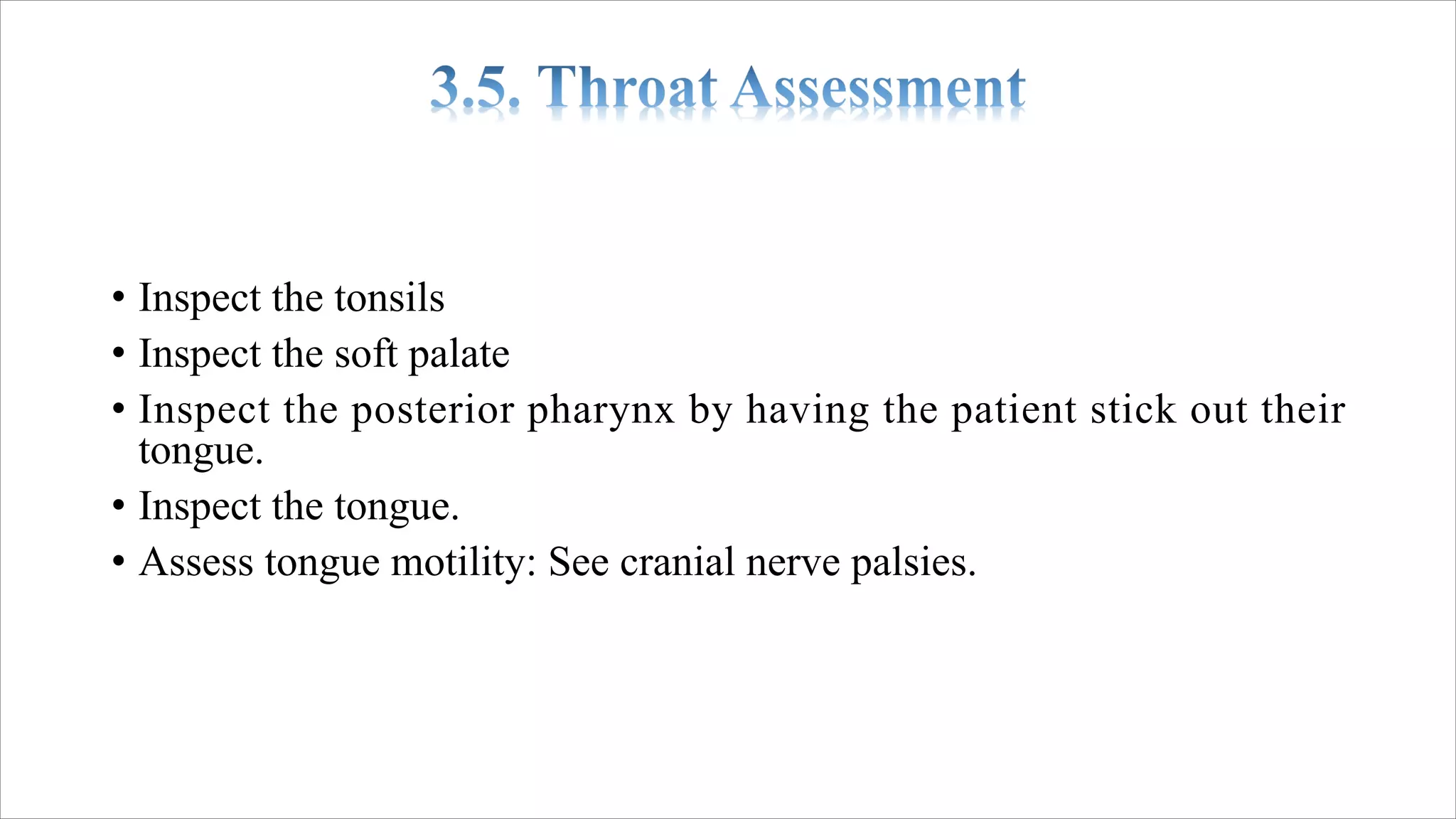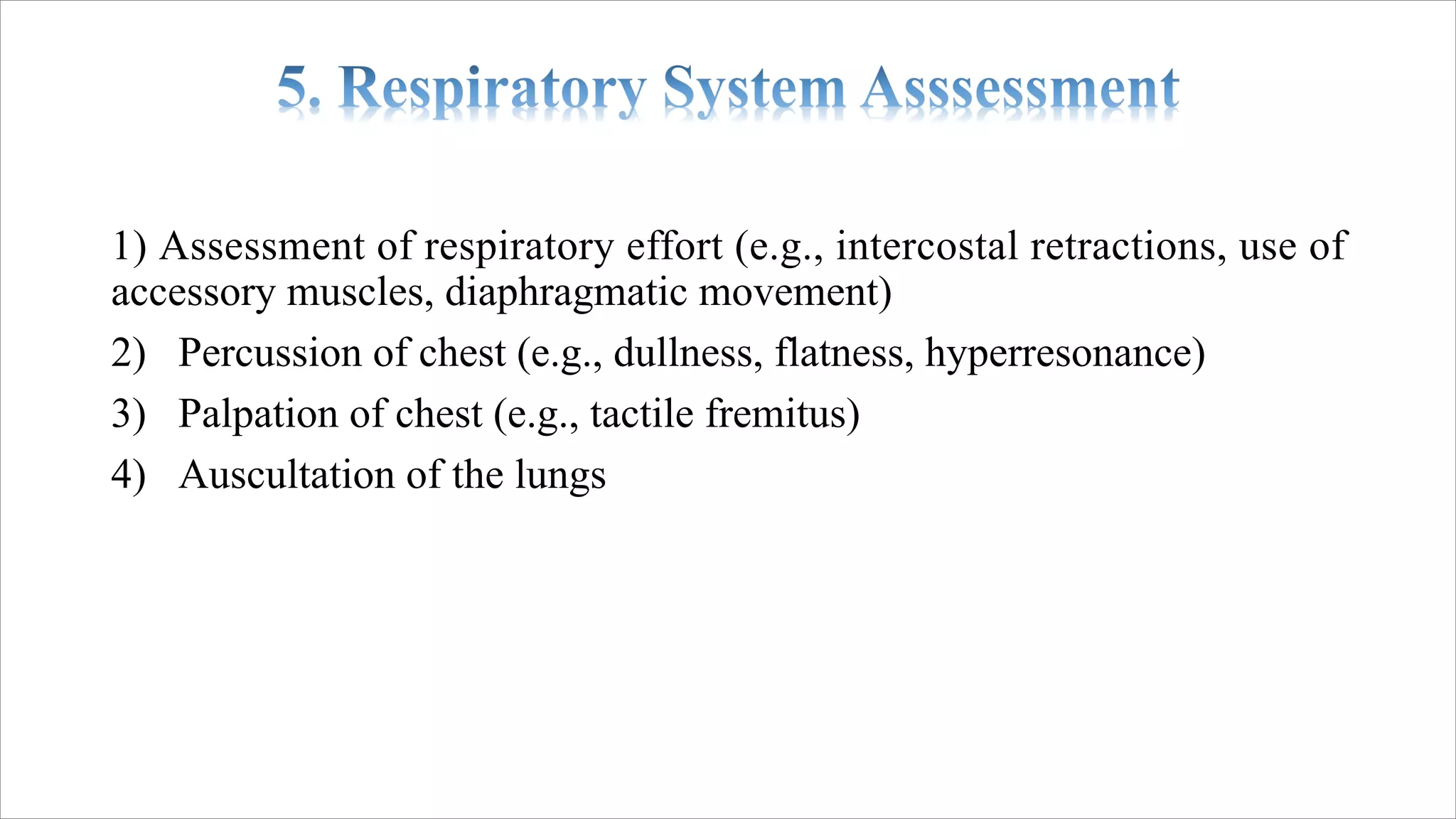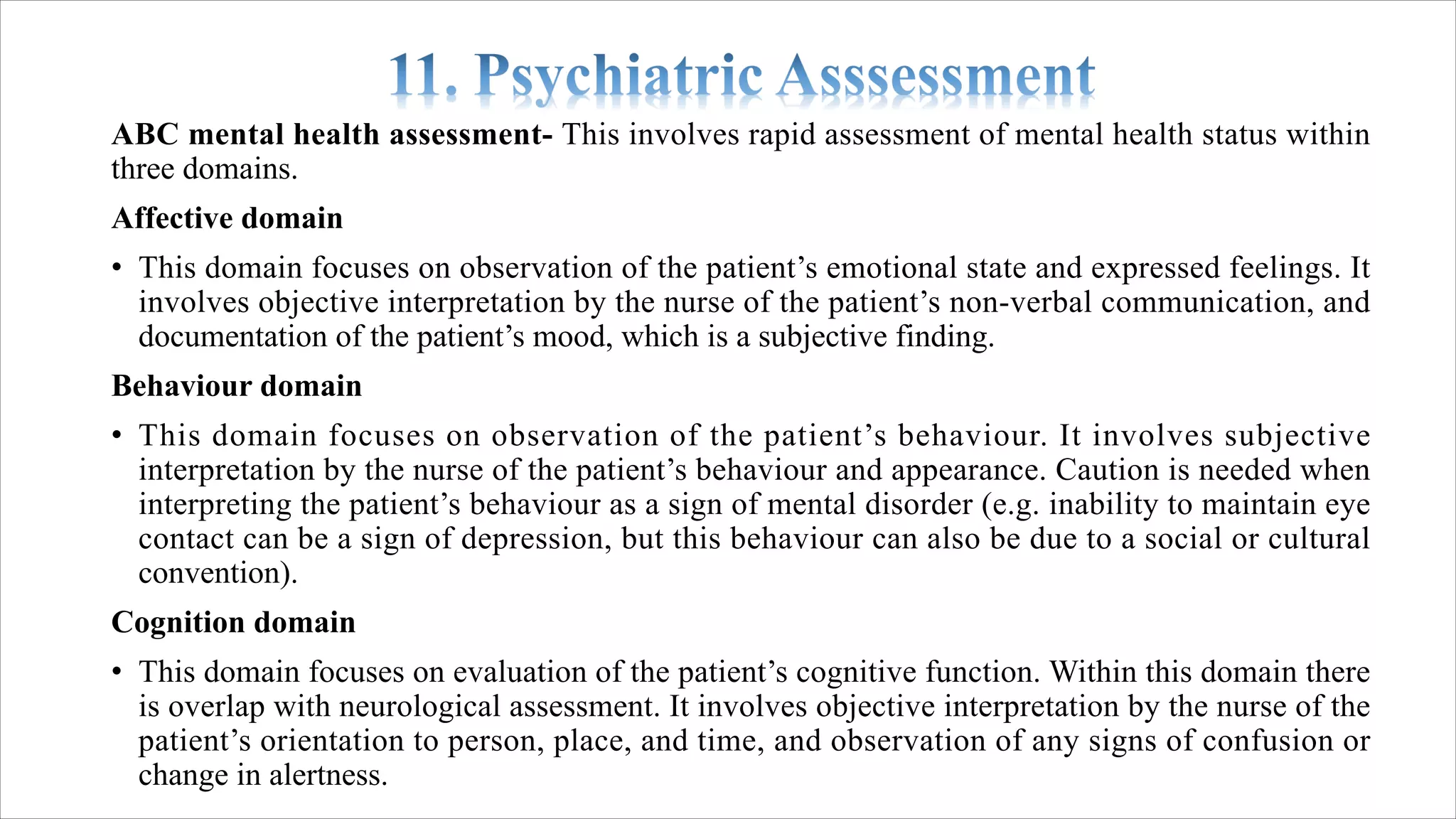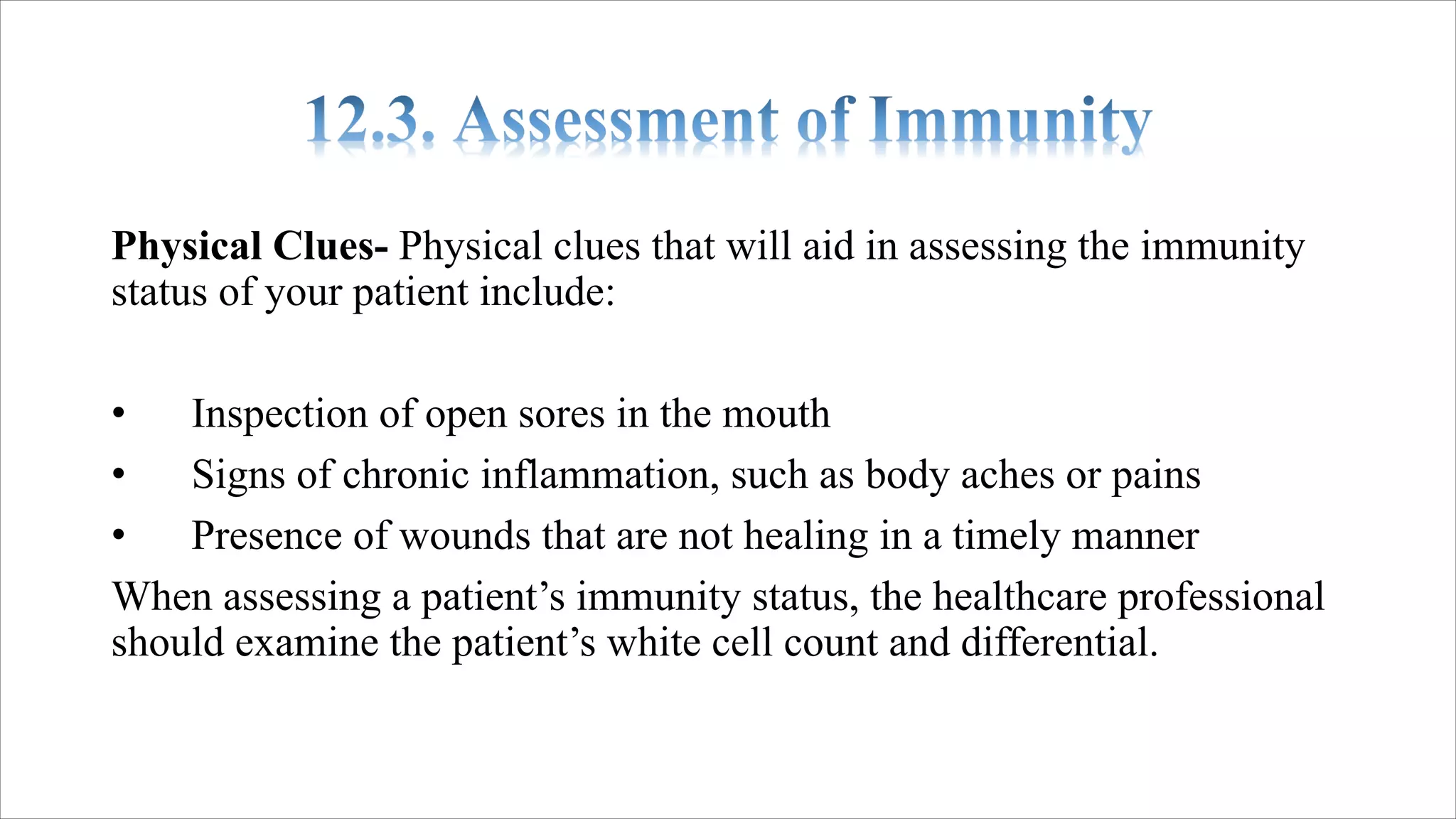The document describes the purpose and components of a systemic health examination. The examination aims to understand diseases, prescribe treatments, diagnose conditions, and plan management. It involves assessment of specific signs and symptoms through examination of body areas and organ systems. The examination can be problem-focused, expanded problem-focused, detailed, or comprehensive. It examines areas like head/neck, chest, abdomen, extremities, and genitalia. Organ systems examined include eyes, ears, cardiovascular, respiratory, gastrointestinal, and others.
